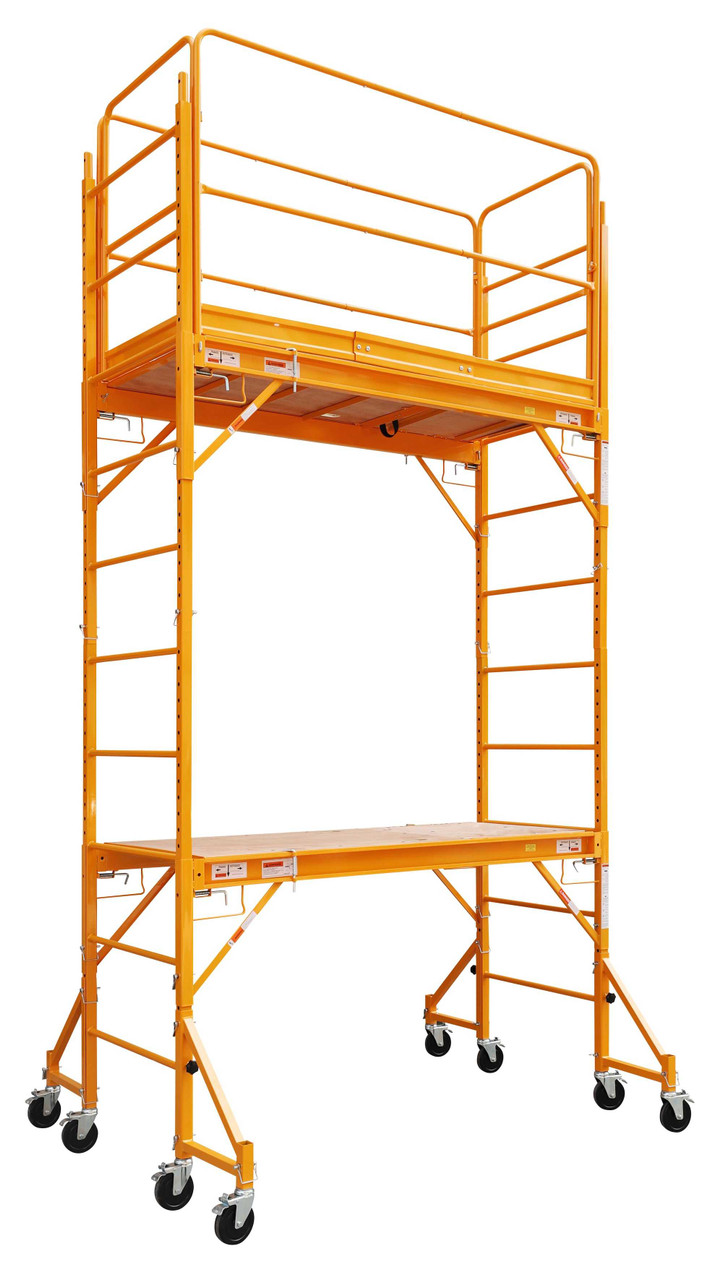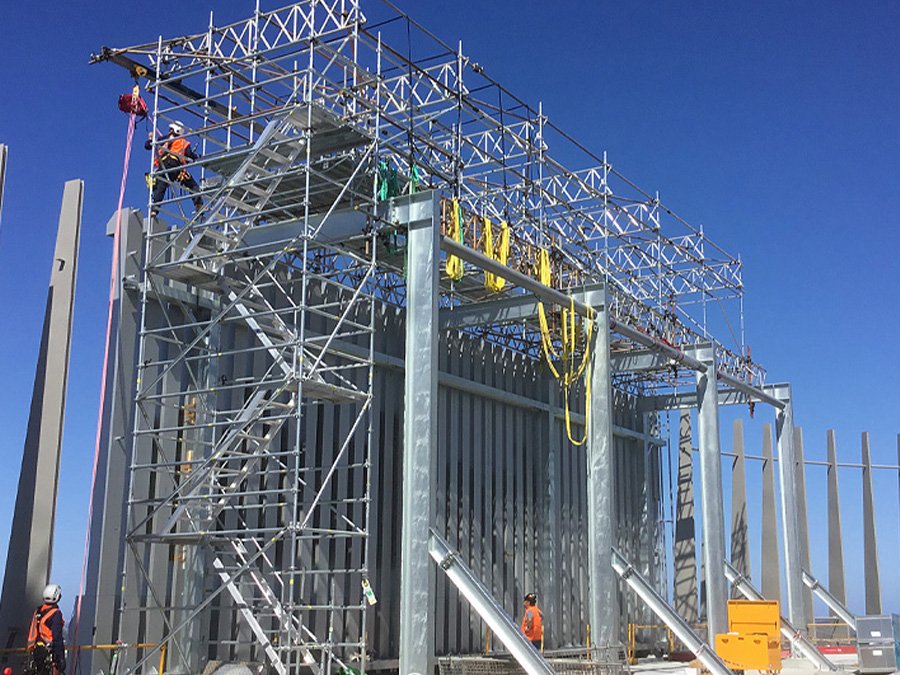A Comprehensive Overview to the Crucial Functions of Scaffolding in Modern Construction
The landscape of modern construction significantly relies upon efficient scaffolding systems that prioritize performance, security, and innovation. As jobs grow in complexity, recognizing the necessary features of scaffolding becomes important for guaranteeing employee safety and maximizing project timelines. This guide explores different sorts of scaffolding, highlights key safety and security features, and checks out material developments that add to performance and sustainability. However, the effects of these elements prolong much beyond plain building and construction techniques, prompting a better consider exactly how they affect overall project success and worker wellness.
Sorts Of Scaffolding
Although scaffolding systems can vary extensively in layout and application, they usually fall under a number of distinctive groups that accommodate different construction demands - Scaffolding. The most usual kinds consist of supported scaffolding, put on hold scaffolding, and rolling scaffolding
Sustained scaffolding contains platforms supported by a structure of poles, which offer a elevated and secure working surface area. This kind is usually used for tasks that require substantial elevation, such as bricklaying or external painting.
Suspended scaffolding, alternatively, is utilized for jobs needing accessibility to high elevations, such as cleaning or fixing building facades. This system hangs from a roof or another framework, enabling employees to lower or increase the system as needed.
Moving scaffolding features wheels that enable for simple mobility throughout a job website. It is particularly beneficial for tasks that call for regular moving, such as interior work in big spaces.
Each sort of scaffolding is created with details applications in mind, guaranteeing that construction jobs can be accomplished successfully and efficiently. Comprehending these groups is vital for picking the appropriate scaffolding system to meet both project demands and site conditions.
Secret Safety And Security Attributes
Safety and security is paramount in scaffolding systems, as the possible dangers related to operating at heights can result in major mishaps if not properly handled. Secret security functions are necessary to make sure the health of employees and the honesty of the building and construction website.
Most importantly, guardrails are essential. These obstacles supply a physical secure against drops, considerably decreasing the risk of serious injuries. Additionally, toe boards are usually used to avoid devices and materials from falling off the scaffold, shielding workers listed below.
One more important component is using non-slip surfaces on systems. This function enhances grasp, especially in unfavorable climate condition, consequently lessening the probability of falls and slips. Access ladders should be firmly positioned to facilitate secure entry and departure from the scaffold.
Regular examinations and maintenance of scaffolding systems are additionally critical. These assessments guarantee that all elements are in good problem and working appropriately, resolving any type of wear or damages quickly.
Last but not least, proper training for all personnel associated with scaffolding operations is essential to make sure that they recognize security procedures and can recognize potential risks. Scaffolding. Jointly, these functions create a more secure working setting and considerably minimize threats associated with scaffolding
Material Developments
Improvements in product science have substantially affected the scaffolding sector, enhancing both safety and efficiency in contemporary building and construction. The introduction of high-strength steel and aluminum alloys has revolutionized standard scaffolding systems. These products are not just lighter, making them less complicated to transfer and assemble, yet additionally provide remarkable load-bearing abilities. This causes scaffolding structures that can sustain greater weights while lessening the risk of collapse.
Furthermore, innovative composite materials, such as fiberglass-reinforced plastics, have become sensible choices. These products are resistant to deterioration and ecological destruction, therefore extending the lifespan of scaffolding systems, especially in rough weather. Making use of such products adds to decrease maintenance costs and makes certain regular efficiency with time.


Design Considerations
Thinking about the complexities of modern construction tasks, effective scaffolding design is critical to ensuring both capability and safety and security. Design considerations should encompass numerous aspects, including tons ability, elevation, and the certain requirements of the construction site. Each job presents unique obstacles, requiring a versatile approach to scaffolding systems that can adjust to varying problems.
Structural integrity is crucial; for that reason, designers need to calculate the lots that the scaffolding will support, consisting of workers, products, and equipment. The selection of products plays a crucial function in ensuring the scaffolding can hold up against these loads while continuing to be light-weight and long lasting. Additionally, the style needs to permit very easy gain access to and egress, facilitating the smooth motion of employees and materials.
Security attributes, such as guardrails and non-slip surfaces, must be integrated to lessen threats of crashes. Furthermore, the layout needs to take into consideration the surrounding atmosphere, including adjacent structures and prospective threats. By resolving these design considerations, building firms can boost the effectiveness of scaffolding systems and promote a safer working environment, eventually adding to the overall success of the job.
Upkeep and Inspections
The effectiveness of scaffolding systems extends past preliminary design and application; recurring upkeep and routine examinations are vital to guaranteeing their proceeded efficiency and safety and security throughout the period of a task. Routine assessments must be carried out by qualified workers to determine any kind of indicators of wear, damages, or instability that might go now compromise the stability of the scaffolding.
Maintenance protocols need to consist of regular checks of architectural elements, such as slabs, frameworks, and fittings, ensuring that all components continue to be safe and totally free from corrosion or various other degeneration. Additionally, the capability of safety attributes, such as guardrails and toe boards, have to be examined to guarantee conformity with security policies.
Documents of all assessments and maintenance tasks is vital for liability and regulatory conformity. A systematic strategy to record-keeping not only aids in tracking the condition of my blog the scaffolding yet likewise gives required proof in case of an incident.
Eventually, establishing a detailed upkeep and evaluation schedule will substantially reduce the danger of crashes and boost the total safety of the building and construction site. By prioritizing these techniques, construction managers can safeguard workers and maintain the task's integrity.

Final Thought
To conclude, the crucial features of scaffolding in modern construction encompass a range of critical elements, including diverse types, key safety devices, product developments, and thoughtful style considerations. Emphasizing safety and security via guardrails and non-slip surface areas, alongside advancements in products like high-strength steel, boosts both performance and sustainability. Routine maintenance and inspections are essential for making sure architectural stability and safety on building and construction websites, eventually assisting in efficient task execution and advertising the health of employees.
The landscape of modern building and construction progressively counts on efficient scaffolding systems that prioritize efficiency, safety, and technology.Improvements in material science have significantly affected the scaffolding industry, improving both security and performance in modern-day construction. Generally, these product innovations not only improve the efficiency and security of scaffolding systems yet additionally align with the market's push towards sustainability, as many contemporary products are made to be more environmentally friendly.
Thinking about the intricacies of modern construction projects, effective scaffolding design is critical to making certain both functionality and safety.In conclusion, the important functions of scaffolding in contemporary building and construction incorporate an array of critical elements, consisting of varied kinds, key safety and security mechanisms, product technologies, and thoughtful design considerations.